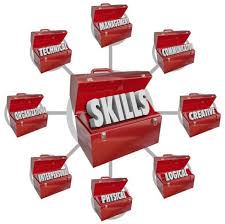When it comes to finding and retaining top talent, having a clear understanding of the skills and expertise of your workforce is essential. A skill inventory is a comprehensive list of the skills, knowledge, and abilities of your employees. It can help you identify gaps in your team’s abilities, create effective training programs, and streamline your hiring process. In this blog post, we’ll provide some guidelines for creating a skill inventory.
Identify the skills you need to include Before you start creating your skill inventory, you need to identify the skills you want to include. Depending on the nature of your business, you might want to focus on technical skills, soft skills, or a combination of both. Technical skills are specific skills related to a particular job or industry, such as coding, project management, or graphic design. Soft skills, on the other hand, are transferable skills that are useful across different roles, such as communication, teamwork, and problem-solving.
Gather information from your employees The next step is to gather information about the skills and expertise of your employees. You can do this through surveys, interviews, or performance reviews. You might also want to consider using a skills assessment tool to help identify gaps in your team’s abilities.
Create a standardized list of skills To make it easier to compare and analyze the skills of your employees, you should create a standardized list of skills. This list should be comprehensive and include all of the skills you identified in step one. You might want to group similar skills together or create subcategories to make it easier to navigate.
Assess the proficiency of each employee Once you have your list of skills, you need to assess the proficiency of each employee. This can be done through self-assessments, manager assessments, or objective assessments such as tests or simulations. You should also consider the level of experience and training each employee has in each skill.
Analyze the data Once you have gathered information about the skills and proficiency of your employees, you can analyze the data to identify gaps in your team’s abilities. You might find that you need to provide additional training or hire new employees with specific skills. You might also want to consider creating career development plans for your employees to help them acquire new skills and advance their careers within your organization.
Keep your skill inventory up to date Creating a skill inventory is an ongoing process. As your business evolves and new technologies emerge, you will need to update your list of skills and assess the proficiency of your employees on a regular basis. By keeping your skill inventory up to date, you can ensure that your team has the skills and expertise needed to succeed in a constantly changing business environment.
In conclusion, a skill inventory can be a powerful tool for managing your workforce and ensuring that your team has the skills and expertise needed to succeed. By following these guidelines, you can create an effective skill inventory that will help you identify gaps in your team’s abilities and make informed decisions about training and hiring.
Growth Best
Samarth Harsh
www.growthbest.com
8899788887




